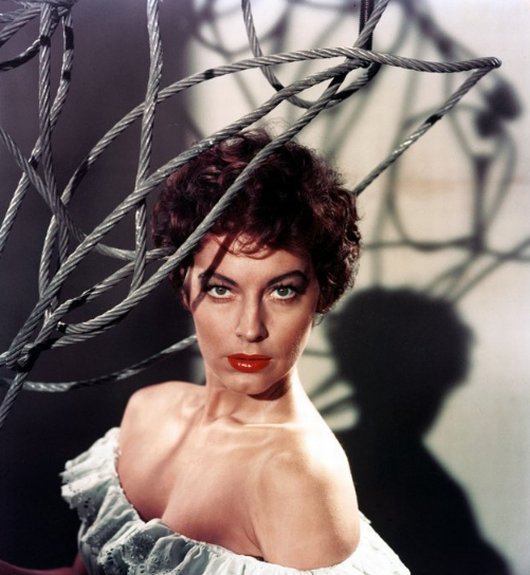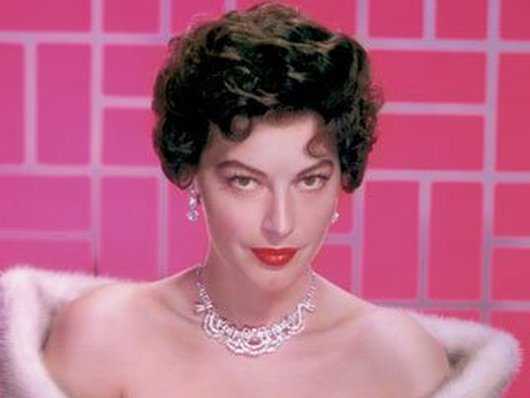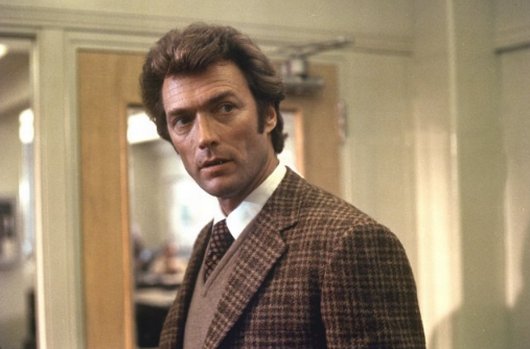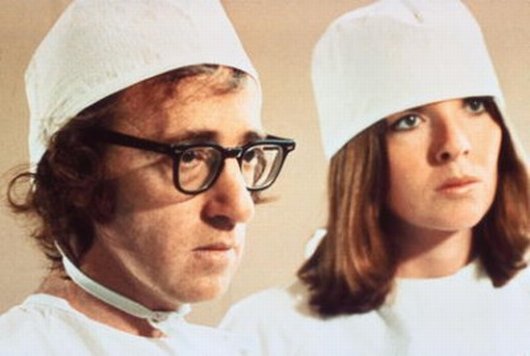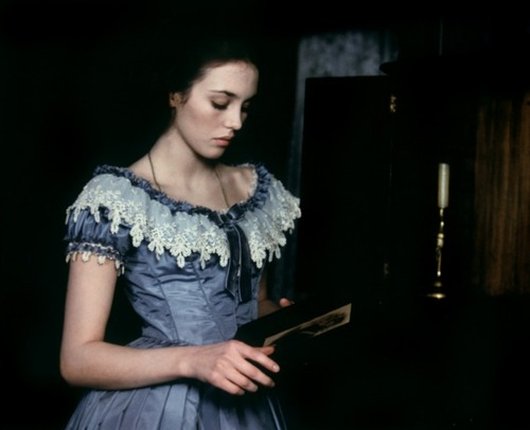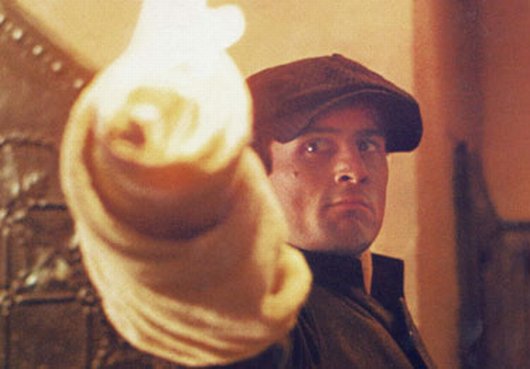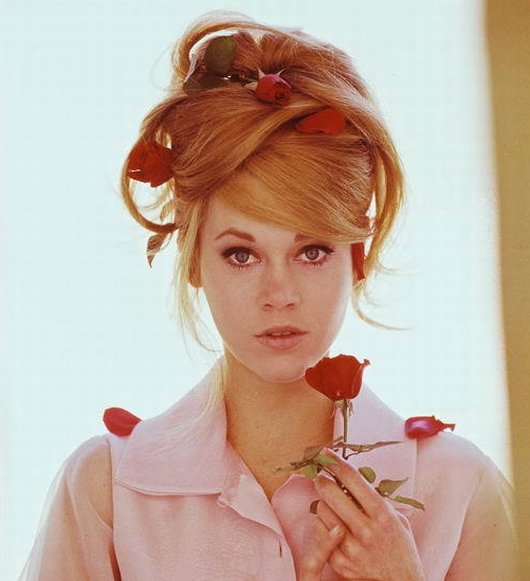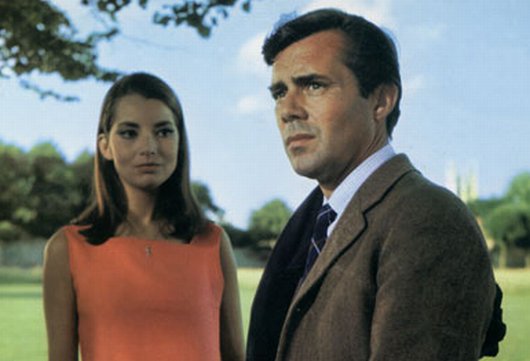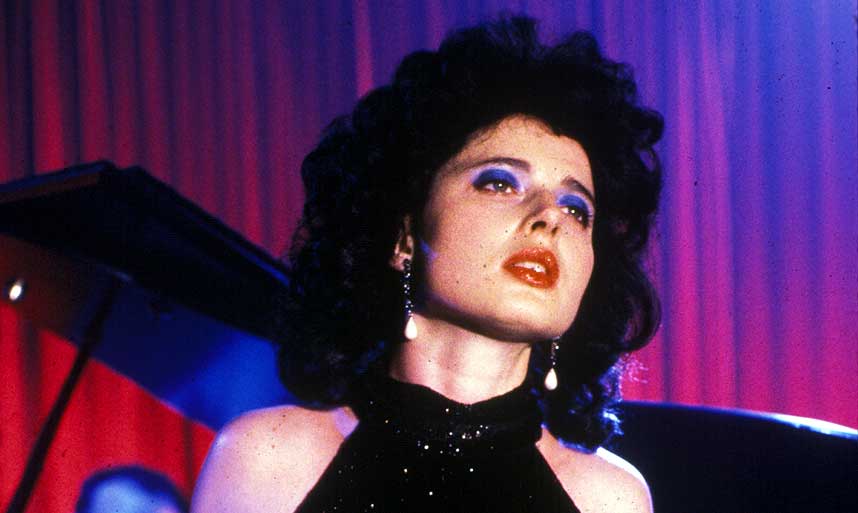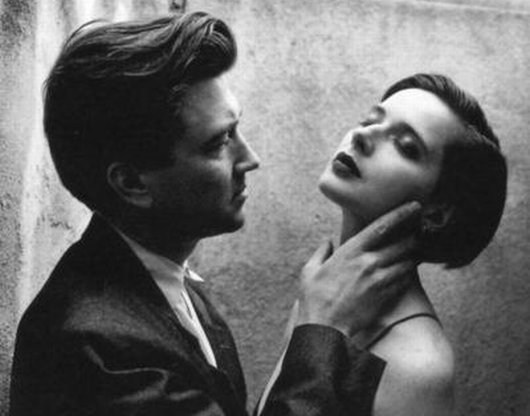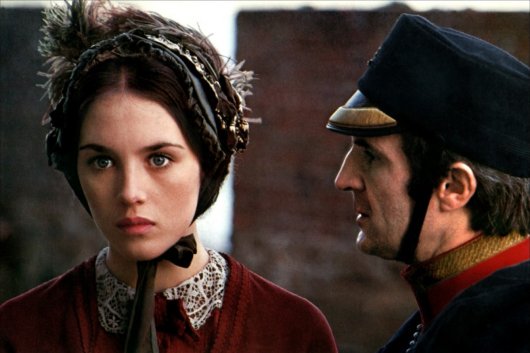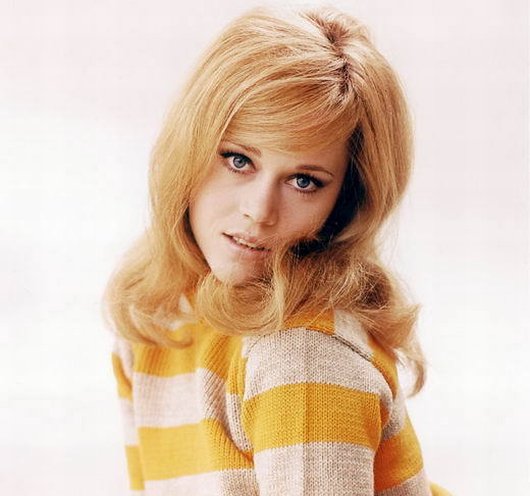
Yvonne's Corridor
Out of the world of dance came Yvonne Rainer like a rocket. From 1971 to 1996 she would make only seven films, all of which operated by discarding old cinematic principles and forging new ones in the gaps they created. Born in San Francisco, Rainer spent much of her upbringing in foster homes, and although she would drop out of Berkeley, she is of a kind with academic feminists breaking ground in their own disciplines. A trip to India in 1971 gave her the perspective on American culture she was seeking. Her feature films began with 1971's Lives of Performers, continued with the groundbreaking collages Film About a Woman Who... and Kristina Talking Pictures, and ended with more mature and colorful efforts like 1986's prefiguring of American Psycho, The Man Who Envied Women and her paean to menopause, 1990's Privilege. In this 1986 interview with the critic Mitchell Rosenbaum, she laughs off comparisons to Godard and Woody Allen, and places her work in its proper context.

MITCHELL ROSENBAUM: You disbanded your dance company, The Grand Union, in 1971...
YVONNE RAINER: I never really had a dance company — they were people I worked with who were also choreographers who had come out of the Cunningham/Cage milieu, and I never considered them my company. I didn't like that proprietary, careerist kind of structure, and this led to making it into an improvisatory group, The Grand Union. That was the beginning of the end of my work with this group. Democratizing it was a way of easing myself out of it, although I wasn't conscious of this until later.
MR: You found that was oppressive as well.
YR: I found that I couldn't do my own work and I couldn't stand the pressures and rigors of improvisatory work.
MR: You said at that point that not having a boss creates new problems.
YR: Right. Also, having to be creative on the spot, which is what that group became. They did incredible work, but I only lasted about two years. By 1972 I was out of it, and my first film was madeaat that time.
MR: Now, after five features, how do you feel about the potentially oppressive role of the director, a theme which you dealt with in your first feature, Lives of Performers?
YR: Well, I guess I've changed my attitude about that. But also the hierarchies of filmmaking are at this point so ordered according to skills that you couldn't make a movie without this kind of hierarchy, unless you do it all yourself, as some people do.
MR: So you've made peace with all that.
YR: Yeah. I mean not that I like it any better, but I like the end product. I don't like production probably for that reason. I like the editing, and I like the scripting. But I don't like the actual shooting, I think, partly because the pressures of low-budget shooting are so extreme. You're on a murderous schedule and always going over budget. So there are those pressures that make it unpleasant in Some ways. I just don't like to work under that kind of pressure. Some people thrive on it.
MR: Lately, some critics have been comparing your work to that of Woody Allen. How do you feel about that?
YR: It's not very accurate. Maybe superficially. The Man Who Envied Women is a very New York-based film with a lot of funny intellectual repartee which is of course Allen's forte. But the rest of the film is so different from anything he would do that I'm kind of put off by that comparison. It doesn't go very far.
J. Hoberman pointed out that the New York I show in this film with dilapidated lofts and slums is very different from Woody Allen's sleek New York of Hannah and Her Sisters, with its beautiful people and Upper West Side apartments. I have to admit I wanted a fancy apartment for the party sequence, but by the time I was shooting, that scene was consigned to just the hallway outside of a closed door through which you heard voices. If I had had more money, I might have used some kind of luxury space. But in a way I'm glad I didn't because that really wasn't the point. The constricted space of the corridor was a much richer metaphor.
 Yvonne and Ivan Rainer in "Kristina Talking Pictures"MR: How do you feel about Jean-Luc Godard's recent work?
Yvonne and Ivan Rainer in "Kristina Talking Pictures"MR: How do you feel about Jean-Luc Godard's recent work?
YR: Oh. I don't like his recent work. I don't like his obsession with nubile maidens and exploiting their sexuality. I think Godard can still do things that are just plain daring. Those last shots in Hail Mary of nature are just so astounding. I keep up with what he is doing and he still does things in his own way; I admire all that, but I think his really meaningful work was done in the late 1960s and early 1970s. He's an amazing, creative genius. I hate to use that term, but it may still be useful in talking about a kind of prolific and politically incisive imagination.
MR: Would you say films like Numero Deux and Wind from the East moved and inspired you?
YR: I can't say they inspired me. I have been slow as a filmmaker to appreciate Godard, or I came to him sideways through his writing. I just appreciated him as a force. People have compared the way I make movies to his, but my way of making movies came out of my particular modernist art-world milieu and not from the French New Wave.
MR: I must have misunderstood something you once said about Godard.
YR: Perhaps in a film. You can't believe anything I say in the first person in my films. I set up the heroine in Kristina Talking Pictures as someone who was inspired by Martha Graham, Godard, and Virginia Woolf. I can't say any of these were prime movers for me at the time I started making film. The statement was for its rhetorical and theatrical effect. I would say Andy Warhol was more influential on my ideas on film than Godard at that moment when I ventured into narrative film.
MR: What do you think of Jacques Rivette?
YR: The only film of Rivette's I like is L'Amour fou. He gives much too much permission to actors, and I don't find what actors do on their own very interesting. But the layering in L'Amour fou with the 16-mm and the 35-mm and the Racine play and the director's life I found utterly fascinating and beautiful.
MR: But for you acting is secondary to language and structure and you prefer actors to be completely flat oracles of the word.
YR: Not necessarily. What you see in L'Amour fou is the actors going about their task of rehearsal for a classic; you see them at work, and the director directing them. But when the illusion of a Rivette film is that the actors are creating the film or you actually sense that he's given over a lot of his directorial control to them in some kind of utopian gesture, it doesn't work. I mean Godard did that in Wind from the East but with a totally different effect.
 during her dance career
during her dance career
MR: Some people have a problem with the flatness of the acting in your films. For example, the narrators of your films are quite monotone and without affect. However, this can be seen as a very natural kind of acting because it's the way people talk in ordinary conversation, or as non-acting.
YR: Well, that's a style I have cultivated.
MR: Of course some people take that for inexperienced or bad acting.
YR: I have trouble with so-called "bad acting" where nothing in the film tells you that the artifice of the illusion is supposed to be revealed. That's where bad acting interferes. In Journeys from Berlin, where the text is very non-naturalistic and it's obviously a surreal kind of recitation, then Annette Michelson's non-naturalistic performance is totally appropriate. The setting tells you this is not a realistic film so you are going for something other than totally credible, believable acting.
Still, a character is built. That is the amazing thing about film. Just the framing and focus on a person speaking creates this bond with the spectator, and it's that illusion that builds the character. I mean it's a two-way thing: the audience in identifying is already constructing the character. It's a much more immediate process than the stage, which always requires the suspension of disbelief. The suspension of disbelief is there a priori in the cinema, with the dark room. It's this very atavistic kind of relationship to an image which some theorists liken to the earliest experience of the infant at the mother's breast watching shadows on the surface of the mother's skin.
MR: Or as in a dream. But given the over-determined quality of your images, don't you agree that you've taken the work out for those same theorists who might examine your films? As opposed to a more intuitive filmmaker, you are probably the best analyst of your own work.
YR: But I don't necessarily know the end effect. That is one by-product of collage. Ambiguity is something that is my stock in trade, and sometimes I'm sure of what an interpretation should be; sometimes I'm not and yet retain a particular configuration because I'm fascinated by the ambiguity of it. I like the Stonehenge image in Journeys from Berlin. I can't say definitively what I intended. I accepted the ambiguity and the possibility for multiple readings that it offered and let it remain. I knew there was no way, without forcing, to push that metaphor or direct it, so I left it open-ended.
 "The Man Who Envied Women"
"The Man Who Envied Women"
MR: Sure. You could say that about Journeys from Berlin, but not necessarily about this last film, The Man Who Envied Women.
YR: Right. That is the result of having much more politicized intentions.
MR: In this film you seem to have confronted the problem facing political filmmakers: that is, you don't so much preach to the converted, as scold them.
YR: Harangue them.
MR: Nobody on the Left gets away without a jab. In particular, artists — a group you're certainly counted among — take quite a beating.
YR: Artists are seen as being in very compromised positions in the urban setting and yet, in other areas, are trying to work in a progressive way. Which I think is the true state of things with New York-based artists today. I had to approach this problem from many different angles: political activism, housing and feminism.
MR: So what about feminism at this point? In this last film you seem to both praise and lampoon the current state of feminism. This is exemplified by the Jackie Raynal character — a femme fatale whose dialogue consists of post structuralist feminist text.
YR: Well, there again it's hard. You are expressing this question about what my position is on some of that material which is very multifaceted. Nothing is resolved.
I follow the debates on sexual difference and Women Against Pornography. I am personally committed to the abortion rights movement. What is expressed in The Man Who Envied Women is exactly what Jackie recites, this Meaghan Morris essay which points out where feminism makes these confusions between right-to-life and abortion rights. It's very complicated. I deliberately make the male character a feminist to show how a seemingly progressive position can be used for aggrandizement all over again. Just as I'm now reading about the history of the medical and scientific attitudes about women's orgasm and reproduction, how social theorists used to view women's organs as simply a version of the man's, like an inverted penis.
Then when this was disputed around the tum of the century, and people like Havelock Ellis began to say women were biologically different, this recognition was used simply to say that women's place was in the home and to reproduce. So, theoretical debates are all very well but can be used in repressive ways. Maybe that's reactionary. I've been called a combat-liberal by Maoists at some point but I thought it was pertinent to these current debates which rage on in this academic realm and are very pertinent to problems of representation. Who in the film is uttering these kinds of doubts? It is a woman who is presented as a femme fatale. It seemed very appropriate that these debates, whatever they are, be keyed to these notions of imaging and sexual difference, or projections of male castration-fear, to open up one of the most pervasive and pernicious examples of female stereotyping in cinema history.
 1974's "Film About a Woman Who..."
1974's "Film About a Woman Who..."
MR: At a screening of a Peter Gidal film in the 1970s, which opened with an unendurably long shot of a corner of a room, you remarked to critic Jonathan Rosenbaum that the filmmaker had backed himself into a corner. Do you think that kind of pure structuralist film has reached its limit?
YR: I think there's still a need for what in some quarters is called optical research, and it's very valuable this playing with the photographic optical materiality of film. Probably it's an avenue that's been exhausted by now. Unless you go into video, and then you get a whole other kind of imagery that's possible with electronics.
MR: Can you talk about the way in which you used footage from other filmmakers, including structuralist filmmakers like Michael Snow?
YR: I think I've shown another use for images that other people have made, including 1940s movies, Michael Snow, and Hollis Frampton. Snow was quite pleased with the way I used his footage. Annette Michelson wrote an essay on Wavelength many years ago that talked about the subtext of the film that is this abandoned piece of real estate that the film refers to and takes place in. So here I was talking about the change in use and exploitation by the real estate market and this classic piece of footage seemed eminently appropriate to use along with the other kinds of footage that I specifically shot to demonstrate this problem. So I'm interested in a certain kind of documentary that can incorporate previous treatments of the same material that originally had an aesthetically transgressive purpose. There's one part of me that will always have my roots in this approach to art-making. But it's become one possibility among more important ones, such as social implications in terms of domination and mystification that attend an image. But I like very much the idea of combining in one shot different levels of meaning, and references that are both aesthetically and socially historical. So I was very excited to explore this use of the Snow material in a new context.
 "Kristina Talking Pictures"
"Kristina Talking Pictures"
MR: How do you respond to those critics of the New American Cinema who have pointed out that this new kind of narrative form, which turns to the filmmaker for its text, merely relocates many of the central aspects of traditional narrative filmmaking and its form of identification to a different plane?
YR: Feminist theorists like Mulvey and Kaplan have pointed out that melodrama, even soap opera, is a place where women's dilemmas are played out in a very visible way. So this offers the avant-garde filmmaker a formal arena in which to make the tensions and dilemmas of women living in a patriarchy accessible and visible. That's the way I pretty much feel about these forms now. It's not very productive to dismiss them outright. Gidal had fenced himself into a corner as of the mid-70s in some kind of material purity and didn't say much to anyone but a small coterie of filmmakers.
This business of something being narrative or not very much depends on what angle of entry you're coming from. For a Hollywood director I'm not making narrative. For me it doesn't matter if it's narrative or not. What matters is how you engage the audience and then lead them to participate in some other way than narrative melodrama usually demands of them, rather than making a narrative with a closure so people can have some sort of Aristotelian response of completeness and life goes on despite the murder and destruction and everything returns to order. I think narrative film conventions offer a way to engage people or give them entry into this familiar realm of identification and recognition, but then, I don't feel I have to be bound to it. So as far as I'm concerned, I can only get better at narrative forms. I'm constantly amazed at how little it takes to hook the audience. Like the way people responded to Annette Michelson's character in Journeys from Berlin. I thought I had made something so obviously artificial and constructed no one could possibly identify with or be repelled by her. It just didn't operate that way. People talk about her as though she is a real person.
I worked a little harder, or differently, to establish my "man who envied women" as a semblance of a "real person." The first scene in the film is the one where you follow a chronology of events. Most other scenes involved simply setting up a situation dominated by the camera or by extra-diegetic material, or an "idea," in locations that could be infused, at least initially, with fictive credibility, such as the "lecture hall," the "therapist's office," the "coffee shop," etc. As far as narrative goes, it's very static. There's one plot element and it's not to develop or consummate a series of events, but to expose him and the audience to different kinds of arguments and information.
 Cynthia Beatt in "Journeys from Berlin"
Cynthia Beatt in "Journeys from Berlin"
MR: Can you talk about what you do with the gaze in this last film? You seem to have taken care of the problem of the male gaze in a twist on Buñuel's dual actresses in That Obscure Object of Desire.
YR: In the Buñuel, the female objects are interchangeable for the male protagonist. In The Man Who Envied Women, the male objects are interchangeable for the audience because there's no internal female character visualized. This seemed to me taking quite literally the problematic of the image of the woman as the object of the controlling gaze. Here, I removed her physical resence totally and doubled the man as an object by having two men play the same role. But it then becoms unclear how the gaze operates. The strategy removes it from narrative convention and there's somelfimg-going on here that disproves a lot of this gaze stuff. The overheard heroine, because she is unseen, cannot be said to be the object of a controlling gaze internal to the film, but then neither is Jack Deller, though both of them are objects of identification for the audience.
This is a case where the traditional axes of gaze, power, identification have been skewed somewhat, allowing the female spectator a less ambivalent access to the image through the voice of the heroine. The male protagonist is not, however, objectified through a simple reversal of codes. His "imaging" is constantly tempered by his powerful "discourses" and by his monitoring and mastering behavior, in the metaphor of the headphones, for instance. He becomes an emblem and agent of patriarchal abuse. His case, from a narrative standpoint, remains unsolved, unresolved. He is never brought "under control" as his cinematic "wild-woman" counterpart has traditionally been. That would be too utopian for my tastes.
 "Lives of Performers"
"Lives of Performers"
MR: Your approach to narrative has changed since you made Lives of Performers.
YR: At that time I was doing a kind of parody of narrative. The performers read self-consciously from a script. It was a very distanciated kind of narrative. Then I would set up these tableaux of minimal situations all in that barren space that could be dressed with a chair or a suitcase to refer to a history of melodramatic objects and usage. So it was very stagey and artificial. When I talk about narrative now, I'm talking about the way it's done.
MR: One of the most difficult sequences to read in The Man Who Envied Women is the lecture sequence. In part because of the sheer length of it and partly because the significance of the space in which the lecture takes place is unclear.
YR: I made some strategic errors — or one, anyway. The subtext of the space of the lecture as being this loft up for sale can only be recognized as such at the end when you see the new kitchen and bathroom. I should have either started in the kitchen, or put in more clues like a realtor's sign or something. I could have handled it differently by putting in some additional clues to make you focus in on that space and its particular New York significance. It's especially opaque to a European audience.
MR: It does elicit the most antagonistic responses from people.
YR: Well, the trouble people have is they have so much trouble with that lecture that at that point they dismiss him. Later they dismiss him when he's talking to his shrink about women, doing that self-pitying, imperial rap. After that they want to hit him around a little bit. So they don't know how to take it when he starts speaking this Foucault stuff. Is this just some more bullshit? Is it being used for bullshit purposes, or what? I can justify that in terms of the complexity of the character. He's not totally bad, not a total schmuck, and he has some intellectual progressive things that are quite clear. Like, I have voices respond to those images on the wall. He talks about the cigar and cheap labor in Central America.
 Yvonne and William Raymond
Yvonne and William Raymond
MR: I must admit I didn't realize you had any sympathy for him at all.
YR: Yeah, I do. There are women who find him vulnerable and appealing. Men are much harder on him, and men really object to him for that reason or to my creating that kind of character. They see him as utterly reprehensible and ludicrous, and they can't take anything he says seriously. But he says a lot of right-on things, including the Foucault stuff. Of course, the irony in the corridor scene is in what they're both doing. You see, I wanted to make a very complicated situation. I didn't want to make a very simple agit-prop sort of film. We see this all the time in the progressive and leftist documentary. In a way he's right when he says, "I'm a mass of contradictions, and what else can you expect under capitalism?" We get it right in some areas and in other areas we have these emotional needs and desires for autonomy and power that take various forms that may be injurious to those around us.
MR: Still, for people who see him as all schmuck, he is simply an agit-prop character.
YR: I think it is obvious that he is a pastiche and a construction. His speech is recitation from a collage of different things including real life. I think I make a calculating kind of film in which you can only go so far in identifying coherent positions either on my part or the characters' before you pull back and say, "Hey, who is this person? How is he made? He's full of conflicting information — what does that mean?" And then you have to deal with the information and not just with him. Like, can you dismiss everything he says because he's a schmuck? I don't think you can read this kind of film in this way. The fact that so many people do, makes me realize how these habits of reading films die very hard, and it continues to be challenging to make films where these viewing habits are constantly interfered with and questioned.
MR: I showed this film to several men, most of whom denied any identification with this character, particularly those for whom such identification should have been appropriate.
YR: I've been surprised at people I had in mind who did not recognize themselves. You can lead a horse to water... I don't know if this person exists, but as I said, the characters are drawn from many different people, texts, and experiences. It may seem unlikely in this day and age that a progressive leftist would talk like Raymond Chandler. All those remarks about women made to the shrink are taken from Chandler's letters. That stuff is definitely dated, like when he says, "I never loved cheap women."
You don't hear that expression anymore, but beyond the anachronisms of usage, there is this obsession and anxiety about knowing and controlling women. He cannot know women well enough. He constantly obsesses over this knowledge by which he assuages his anxiety. This, I think, is something that has taken a new form. The feminist man. Feminism as it is used by certain kinds of womanizing men. So it's plausible and perhaps is meant as some kind of object lesson ... a warning. Women recognize him instantly. Especially those from the academic community. They hoot and holler in recognition.
 Jackie Raynal and William Raymond in "The Man Who Envied Women"
Jackie Raynal and William Raymond in "The Man Who Envied Women"
MR: Do you have any of the same ambivalence towards the Jackie Raynal character?
YR: No, because Jackie is even more obviously a construction. She appears in only one scene and speaks, or recites from a single source, "The Pirate's Fiancee," an essay by the Australian journalist, theorist, feminist, Foucaultian, Meaghan Morris. Jackie too is using language for seduction, cast in the guise of the femme fatale. Now the hitherto repressed female image returns with a masterful voice. That whole scene is so full or irony and excess and tension that it works: the constriction of the space; the way they can move only a couple of steps at a time; the problematizing of the feminist space for feminist intellectuals; the railing against Lacan which goes on, the dream in the middle of it with its eruption of mistaken identities and roles — son/husband exchange by the collapsed mother/daughter — the Oedipal circus turned on its head.
MR: So what about your next project. Anything you can talk about?
YR: Very preliminary work. This is very different and suggests a story, which of course has problems. I'll have to think about that as the story materializes.
MR: But in the past you've gone about the task of starting a project in a similar way?
YR: Always in bits and pieces of things: a title, The Man Who Envied Women, came very early to me, as did the housing thing, which I was involved in. The character of Jack was one of the last things. I knew I wanted him to be talking to a shrink and giving a lecture. And of course I always like to layer different realities wherever possible, even if it doesn't make sense at the moment. So I had him lecture in a condo which is on the market, which, as I said, I did not make clear enough. Of course this refers directly to the way universities buy up poor neighborhoods. That could have been made clearer also. What he would say to the shrink, I tried to write, and it was maudlin and Psychology Today-ish. Then I came upon these letters of Raymond Chandler and that clinched it. I looked up women in the index and all this stuff fell out.
MR: But when you apply for money to the various sources, how do you relate that kind of disjointed treatment?
YR: When I started applying for money, I wrote a pretty coherent treatment which could have been a "real" film. That's what you have to do these days to make it sound plausible.
 1990's "Privilege"
1990's "Privilege"
MR: So the actual film resembled the treatment only vaguely?
YR: Somewhat. The lecture I thought would be on economics. I thought the film would deal more with menopause than it does. It just sounds, of course, more coherent. It had a thesis that had to do with the contradictions of the main character. Those things were mapped out. Whether or not the film elucidates all of them I don't know. But I certainly had a treatment that sounded convincing. The toughest thing was the male character and how to develop or not develop him. I had some preconceptions about who he was and how to get that across. Someone who knows fictional technique and dialogue and all that would have had an easier time, but I had to wait until these things sort of materialized for me. I'm not really a fiction writer. That has its drawbacks when you have a plan. I'm going to run into the same thing again, but I'll deal with it in a different way this time even to the point of asking a writer to come in on the project.
MR: How is the money situation for you as an avant-garde filmmaker in the age of Reagan?
YR: For me it doesn't look good. If I want to make a film with locations and this length, I can't do it again. I can't raise enough money in this country and it's drying up in Europe too.

MR: Do the returns on a film like The Man Who Envied Women have any effect on possible grant money or backing from other sources for future projects?
YR: No, I don't think that's going to be an issue for me. I think it is an issue in the case of someone like Spike Lee, who now has access to other than public money. When I think about the films that are successful, I can't imagine moving towards that kind of filmmaking.
MR: So, I guess for your next project you'll just have to cut back on the Star-Warsian special effects.
YR: Special effects? A freeze-frame of a door... for me that's a special effect!
1986







"You Need Me, I Don't Need You" - Ed Sheeran (mp3)
"Lego House" - Ed Sheeran (mp3)
"The City" - Ed Sheeran (mp3)
The first studio album from Ed Sheeran, +, was released on September 9th and you can purchase it here.
 Kate Parker in "Kristina Talking Pictures"
Kate Parker in "Kristina Talking Pictures"
 FILM
FILM  Friday, August 16, 2013 at 11:41AM
Friday, August 16, 2013 at 11:41AM 
 Watching foreign actresses playing white American socialites is an occupation, like lawyer, seamstress, or federal agent. There's an actual word for it, but it's filthy.
Watching foreign actresses playing white American socialites is an occupation, like lawyer, seamstress, or federal agent. There's an actual word for it, but it's filthy.






 alex carnevale,
alex carnevale,  blue jasmine,
blue jasmine,  woody allen
woody allen 





























